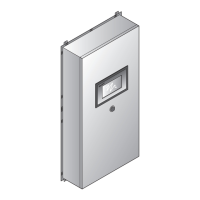nVent.com | 3
SECTION I – OVERVIEW
1.1 INTRODUCTION
The nVent RAYCHEM NGC-30 is a fully wired and tested control and monitoring system used
with electric heat tracing. This manual provides information pertaining to the installation,
operation, testing, adjustment, and maintenance of all components of the RAYCHEM NGC-30
System. For information about how to program the RAYCHEM NGC-30, see the RAYCHEM
NGC-30 Programming Guide (H58186)
A typical RAYCHEM NGC-30 is made up of at least a User Interface Terminal (NGC-UIT2),
one Card Rack (NGC-30-CR), one Card Rack Module with connectors
(NGC-30-CRM or NGC-30-CRMS), and one Current Transformer Module (NGC-30-CTM).
Optional Remote Monitoring Module for Temperatures (RMM2), Power Line Carrier Interface
(PLI), RMC modules, Remote Monitoring Module for Digital Inputs (RMM-DI) and Voltage
Monitoring Module (NGC-30-CVM) may be used.
The information in this document coincides with the specific releases of firmware
(listed in Table 1.1) for the User Interface Terminal (NGC-UIT2) and Card Rack Module
(NGC-30-CRM/-CRMS) components. As nVent releases new firmware to significantly modify
or enhance any of these components, new documentation will accompany these releases.
To ensure that the correct documentation is being used for your particular version of the
RAYCHEM User Interface Terminal (NGC-UIT2), compare the firmware version number of
each component against the number listed in the table below. As subsequent changes are
made, supplements to this document will be included in manuals shipped after the firmware is
released. Supplements will make specific reference to the operation or functional change.
Copies of this manual and updates may be downloaded from the Literature section of
nVent.com.
Table 1.1 Component versions
Component versions
Component Version number
NGC-CRM/CRMS V1.0X
NGC-UIT2-EX V2.1.X or V4.X
RMM2 V1.0X
RMM-DI V1.0
IMPORTANT WARNINGS AND NOTES
The following icons are used extensively throughout this manual to alert you to important
warnings
that affect safety and to important notes that affect the proper operation of
the unit. Be sure to read and follow them carefully.

